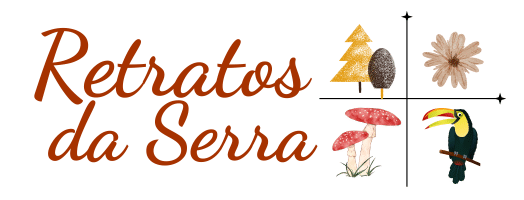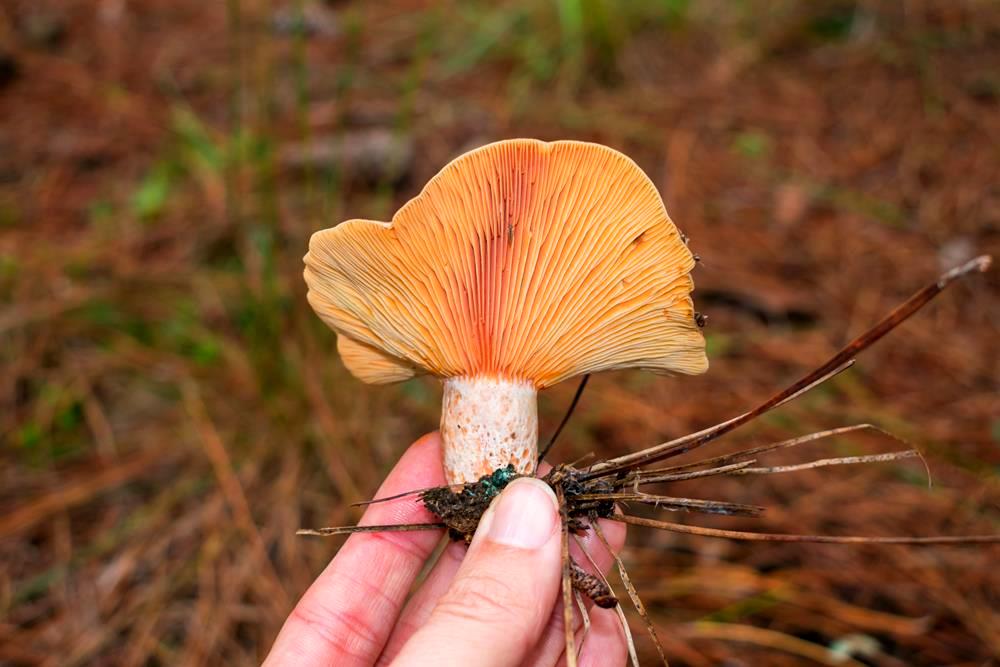Lactarius quieticolor, a delicious species of wild edible mushroom that we fortunately find in abundance here in São Francisco de Paula (South of Brazil)! Níscalo in Spanish and Carrot Milkcap in English, are some of its common names.
Introduction
Searching on the internet, there’s a lot of confusion between this species and Lactarius deliciosus, which are extremely similar. Through the Primavera Fungi book and their Instagram, I ended up discovering that until recently, the Lactarius found here in Brazil were classified as L. deliciosus, but recent research through molecular biology analysis revealed that they are actually of the species Lactarius quieticolor.
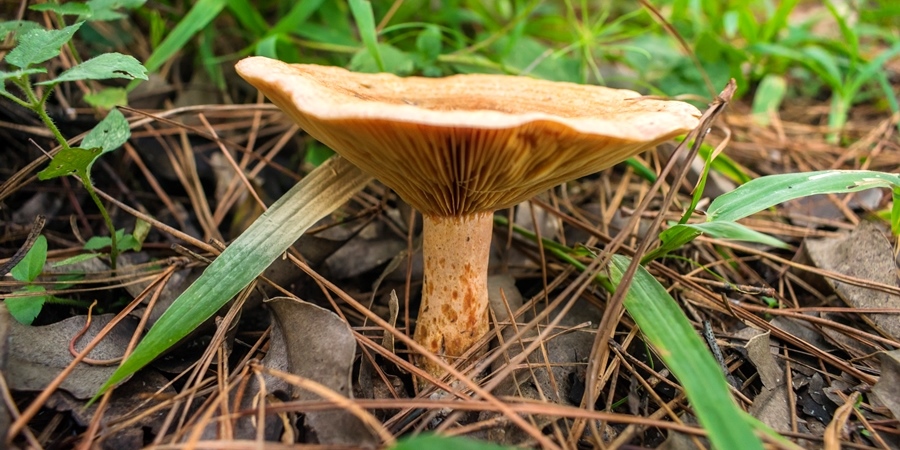
My husband and I moved to São Chico in late 2022, so the fall of 2023 was our first mushroom hunting season in the region, and the first Lactarius we found was on 04/29/23. Luckily, we found many on our land, which has about a dozen Pinus scattered across a large area of native forest.
One interesting fact is that, in our experience, we find them in abundance in regions where there are pine trees with native forests around them; in pine plantations, we usually only find them on the “edges” where the plantation ends and the native forest or pasture area begins. I don’t know if it’s a coincidence, but we find it curious!
Lactarius quieticolor characteristics
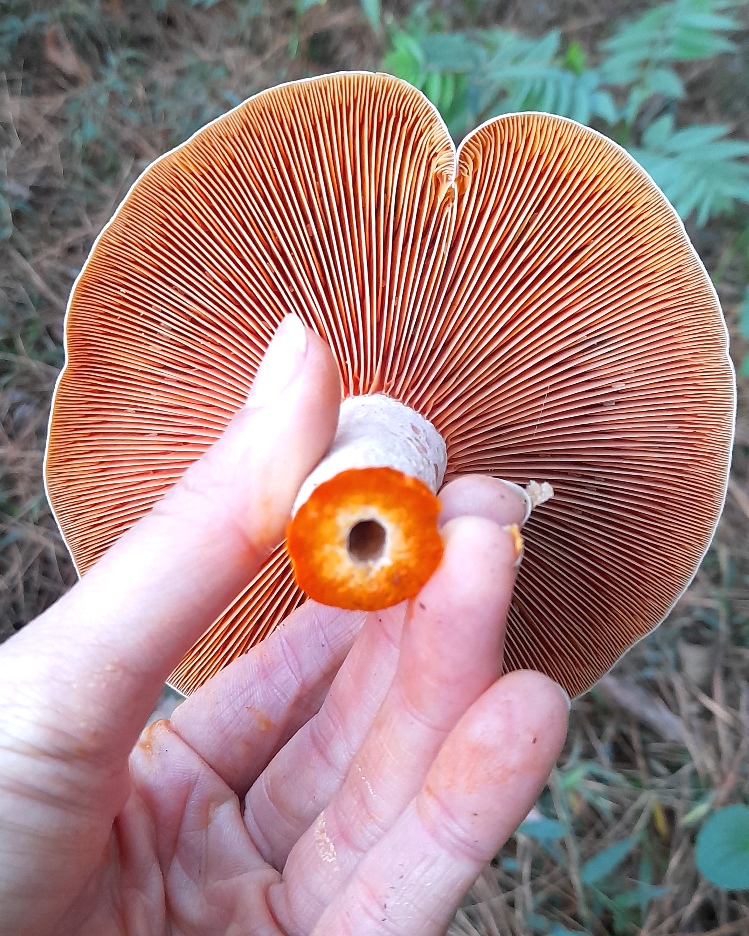
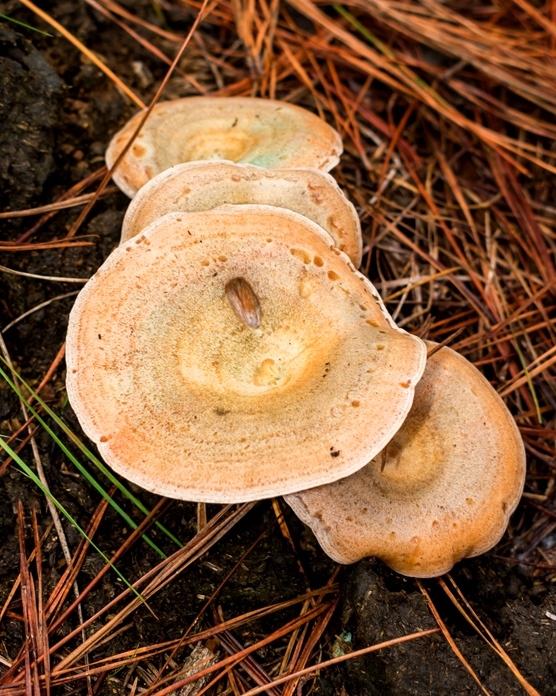
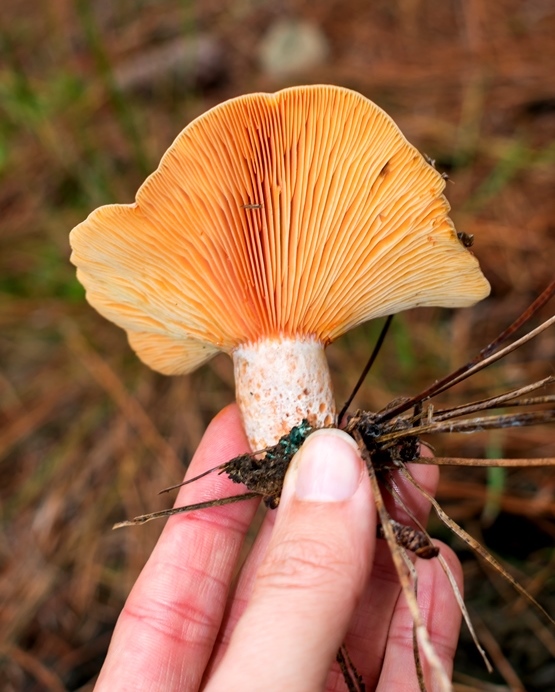
This mushroom grows in association with the roots of pine trees (Pinus sp.), which are not native from here but were brought here for wood harvesting and became quite common in some regions, as it’s the case here in the Serra Gaúcha; and luckily this mushroom’s mycelium/spores came with them. It is found mainly in autumn and winter.
It has a very characteristic orange color, and when bruised or older it takes on greenish tones. When very young it can also have a beautiful blue color. Its cap (pileus) becomes concave as the mushroom gets older.
Its hymenophore (the underside of the cap) has gills and does not release latex like other species of Lactarius (such as L. hepaticus). Its stipe (stem) is brittle and hollow inside, with the presence of some spots that look like bubbles on the outside, and sometimes they are also present on the cap. I don’t know the scientific name for this characteristic, but you can see it clearly in the photos.
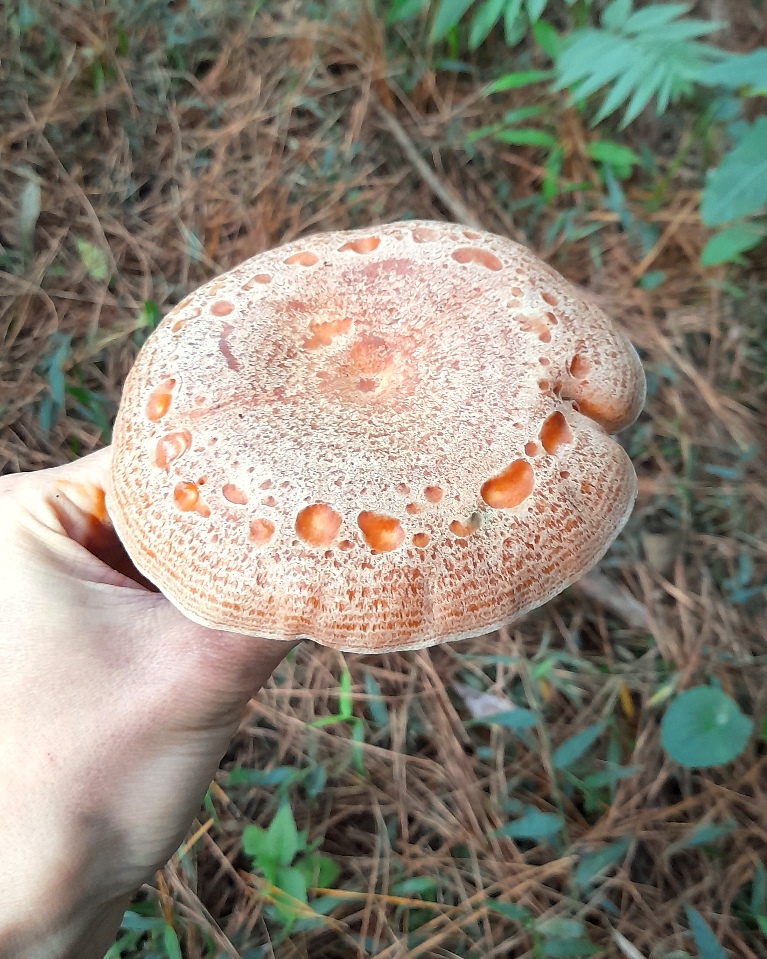
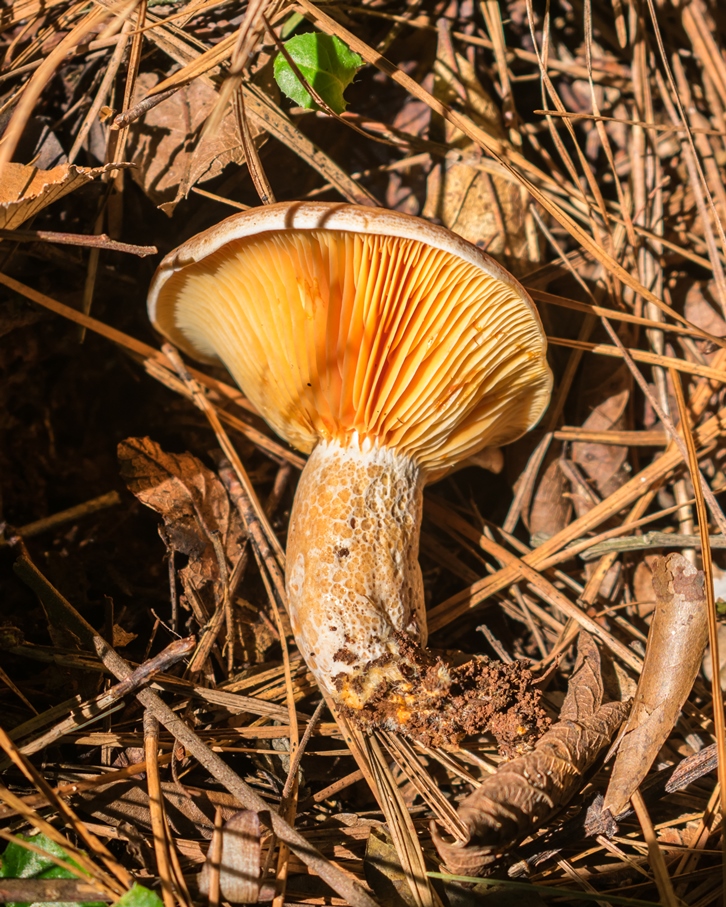
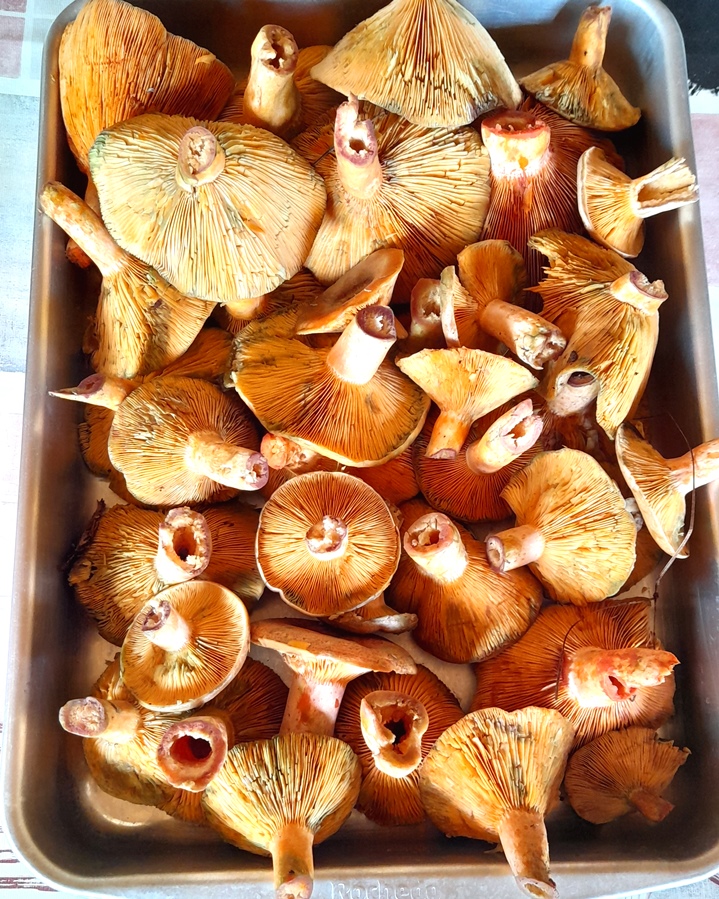
In my experience, when adult their height and cap diameter vary on average from 5 to 10 cm, but I have come across some very big ones with caps of around 15 cm in diameter.
How to prepare fresh Lactarius mushroom?
To clean fresh mushrooms, remember not to use water. Just remove any dirt and soil with a small brush, toothbrush, or even scraping it with a knife. Then cut off any parts that are very damaged, or have lost their original color or texture (sometimes this can happen during transportation, or after the mushrooms have been in the refrigerator for many days).
Afterwards just cut it into strips or smaller pieces, as you prefer, and sauté it with the seasoning of your choice. We usually sauté it in a bit of oil, adding a pinch of salt, black pepper and nutmeg. After about 5 minutes it will be ready, but since we like the texture even firmer and harder, we leave it for almost 10 minutes. It has a very strong and distinctive flavor!
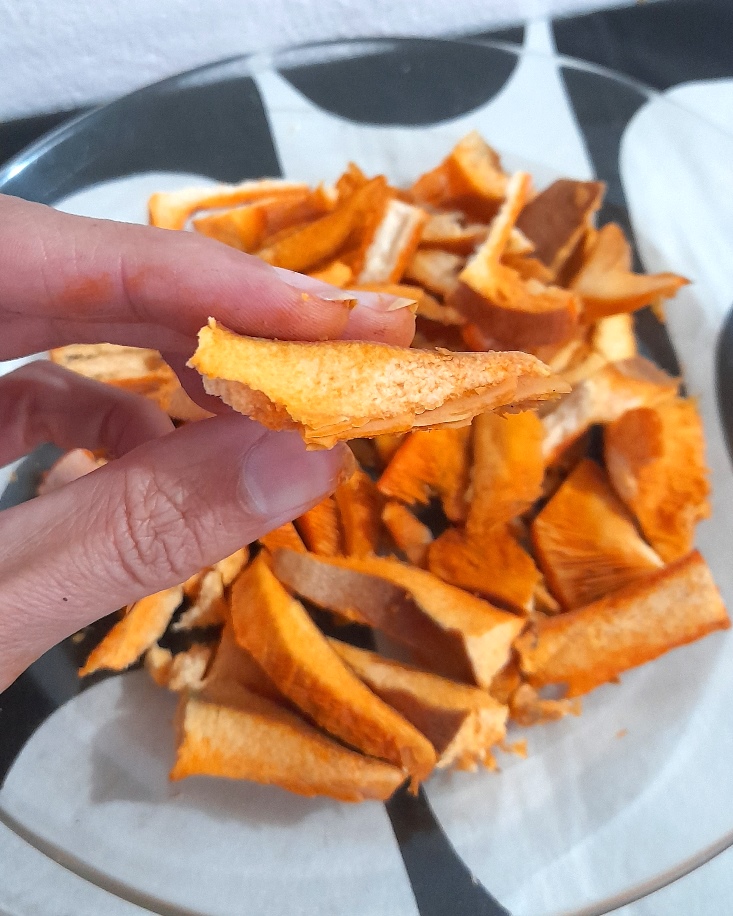
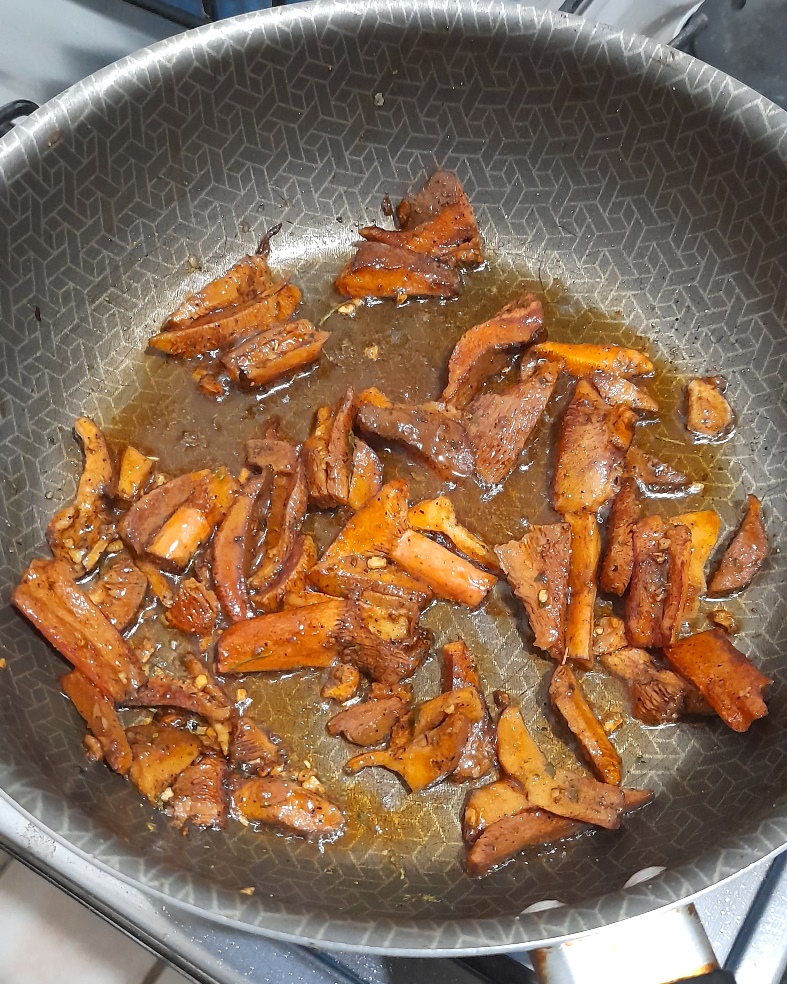
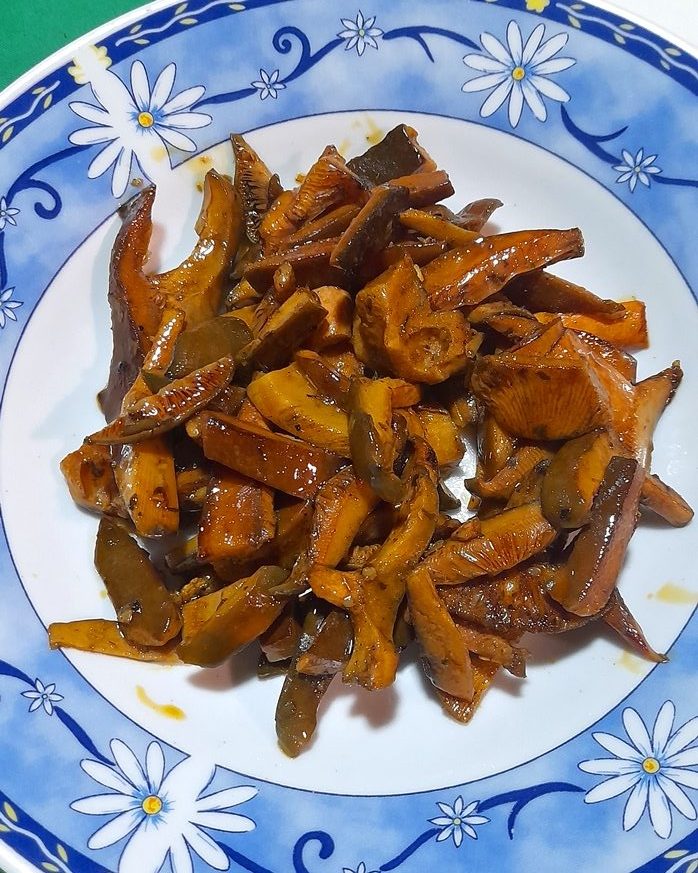
Another tip is that its orange color is super strong and stains your hands, nothing that can’t be removed after washing well with soap, but if you want to avoid this, just wear gloves.
I’ve also dehydrated them to save the excess, breaded them, and added them to pancake batter… The recipe possibilities are endless, your imagination is the limit! Little by little you’ll learn how you like them best and create your own way of preparing them.
📸 Pictures made in São Francisco de Paula, Rio Grande do Sul (Serra Gaúcha, South of Brazil).
⚠ Remember to never eat wild mushrooms without proper identification.
